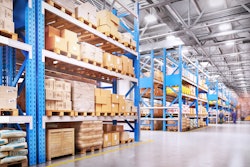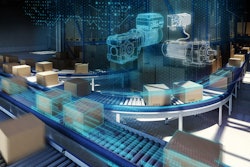
From the simplicity of rollers and conveyors to the installation of the first laser scanners for reading barcodes, warehouse and facility management is continually advancing to bring goods to consumers faster, cheaper and more efficiently. This couldn’t be truer than when viewed through the lens of a parcel shipper moving a million or more parcels through their networks daily. Process automation and the deployment of robotics have done more in recent years than perhaps all previous innovations combined, and not just for productivity. Let’s take a closer look at how automation and robotics in shipping and logistics have enhanced everything from workplace safety to employee experience.
Workplace Health & Safety
This is one of the most significant areas where the application of robotics and automation technologies have improved warehouses and shipping facilities. The first benefit that comes to mind is the reduction of physical strain and an overall lower risk for injury when robotics are deployed to automate such physically demanding tasks as moving heavy and odd-sized items. Relative to manual handling, automation can also make collisions a thing of the past, both human and those from equipment and vehicles moving through the physical space of a facility.
For training purposes, automation can be used to create “sandbox environments” to simulate realistic scenarios in which employees can learn without the present risks of a fully functioning facility. Augmented reality (AR) and virtual reality (VR) applications have come a long way, and while they have greater practical applications than powering video game experiences, they *can* be used to safely gamify certain onboarding and instruction needs for a warehouse facility.
And of course, there is the movement of hazardous materials through a facility. Specific to shipping, if you consult the USPS policy governing categories and classifications, hazardous materials include “any matter having a clear potential for causing harm to the mail, persons, or property involved in moving the mail,” which can be anything from batteries to pool chemicals and even some beauty & personal care items (hairspray, nail polish remover, and more). Among the many sizes and types of items robotics can be employed for handling, this is perhaps the primary area of benefit for the safety of facility employees.
Efficiency, Maintenance Made Easy
Automation and robotics deployed in warehouse and facility settings serves to increase efficiency and productivity in a variety of ways, from expediting fulfillment to reducing facility dwell times and transit times for shipped parcels. With robotics, any task that may be intensive for human workers, such as awkward or heavy lifts requiring more than one person, is made simpler through machine assistance (when properly trained and programmed, of course; we’ll get to that later).
Predictive maintenance is another benefit of automated, AI-powered systems, which can be used proactively for maintenance reminders, as well as reactively to help identify potential issues in machinery before or at the time of a breakdown. Reduced likelihood of unexpected downtime not only helps maintain productivity through streamlined operations but can also contribute to overall increased jobsite and facility safety for the human workforce, since breakdowns and equipment failures can cause dangers in the moments they occur.
Boost Morale Almost Automatically
There are a few areas where the employee experience (EX) for warehouse and facility workers can be greatly improved through the application of automation and robotics. To start, these technologies free up human employees to focus on higher-value work. Robots excel at routine tasks, without much alteration to the process to realize the outcome. This can help human workers transition to more strategic, perhaps critical, tasks, for which completion provides a greater sense of accomplishment.
Earlier we alluded to a caveat in machines and technologies making work safer and more efficient for your human employees: proper training and programming of those technologies. It’s work that someone has to do, both at the onset of application, as well as in an ongoing fashion to promote continuous improvement. Giving human workers the opportunity to develop and apply these new skills is an empowering move that helps create a sense of oversight, management and ownership.
Finally—and perhaps it goes without saying—the application of automation and robotic technologies in warehouse and facility settings means your company and your workforce are adapting, staying competitive and preparing for industry changes. These fuel a sense of satisfaction and pride for human employees, to be part of an innovative and forward-thinking workplace at the forefront of competitive trends. And it’s a known fact that proud, motivated employees who are excited to come into work are also typically more aware of their surroundings and their colleagues—human or robotic—thus further contributing to a heightened sense of safety.
Employees, and ultimately customers, are directly and positively impacted by the wide-ranging benefits of automation and robotics applications in warehouse and shipping facilities, from safety to productivity and beyond.












![Pros To Know 2026 [color]](https://img.sdcexec.com/mindful/acbm/workspaces/default/uploads/2025/08/prostoknow-2026-color.mduFvhpgMk.png?ar=16%3A9&auto=format%2Ccompress&bg=fff&fill-color=fff&fit=fill&h=135&q=70&w=240)






